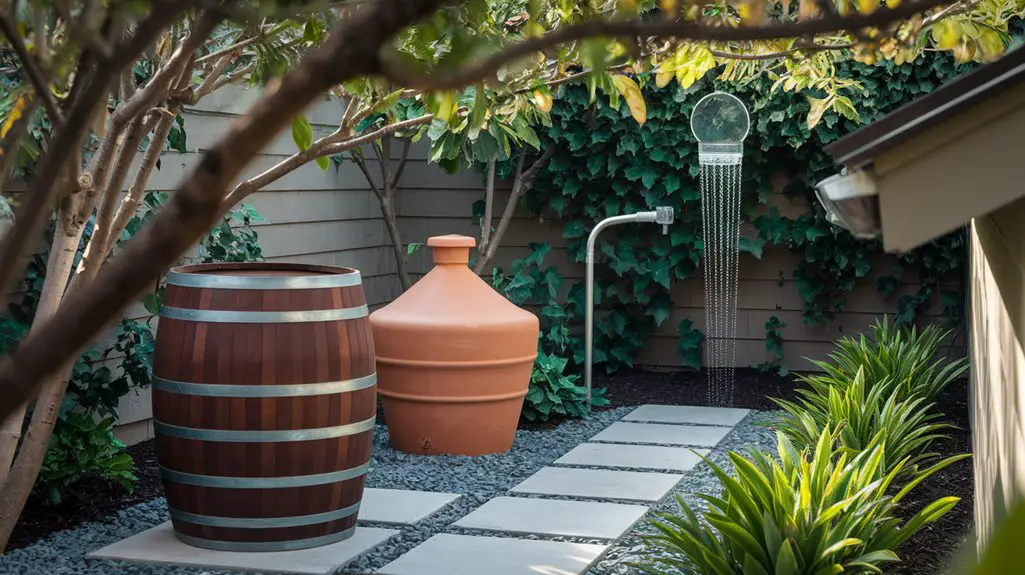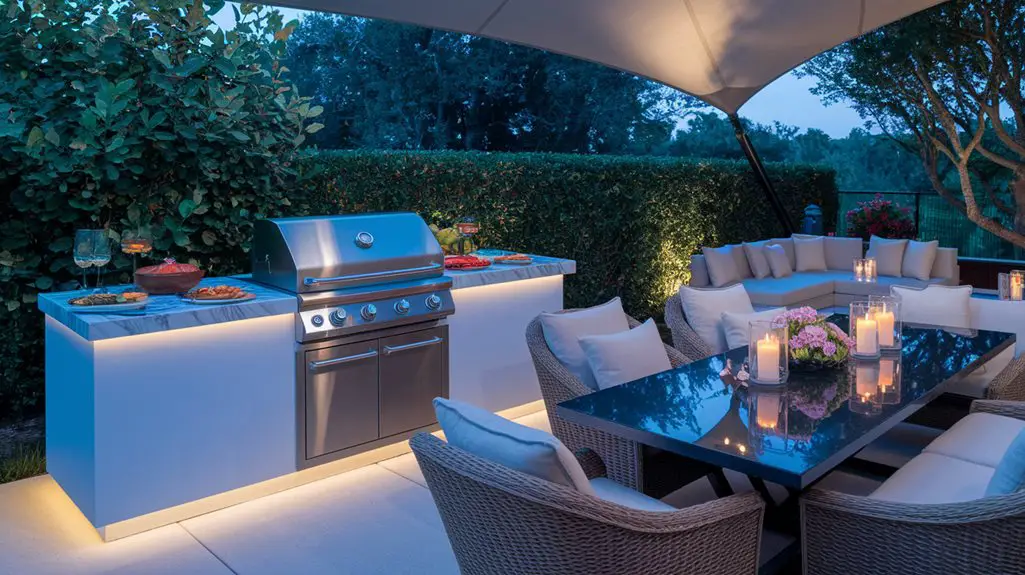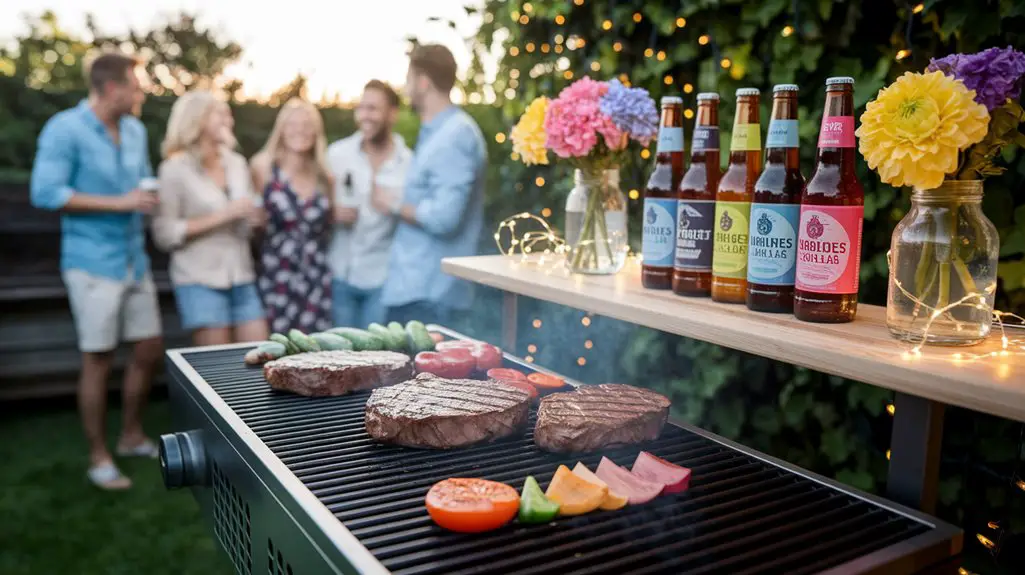You’re likely wasting hundreds of gallons of water during each rainfall. Research shows that a 1,000 square foot roof can collect up to 600 gallons from just one inch of rain. With the right harvesting system, you’ll capture this free resource while reducing your water bill by 30-50%. Three specific backyard systems can transform your property’s sustainability profile—each offering distinct advantages based on your space constraints, budget, and water needs.
Barrel Collection Systems: Affordable DIY Solutions
When considering rainwater harvesting options, barrel collection systems stand out as the most accessible entry point for homeowners.
These systems typically consist of a 55-gallon barrel positioned beneath downspouts, capturing rainfall that would otherwise flow into storm drains.
A standard barrel system costs between $50-120 and can be assembled in under two hours using basic tools.
Each inch of rainfall on a 1,000 sq. ft. roof yields approximately 600 gallons of water, meaning even modest systems can collect significant volumes during wet seasons.
For ideal functionality, install a first-flush diverter to prevent contaminants from entering your barrel.
Multiple barrels can be linked via overflow pipes, creating scalable storage capacity of 100+ gallons.
These systems pay for themselves within 1-2 years through reduced water bills. Additionally, rainwater harvesting can significantly contribute to water conservation efforts, making it an environmentally friendly choice for homeowners.
Underground Cistern Systems for Maximum Storage Capacity
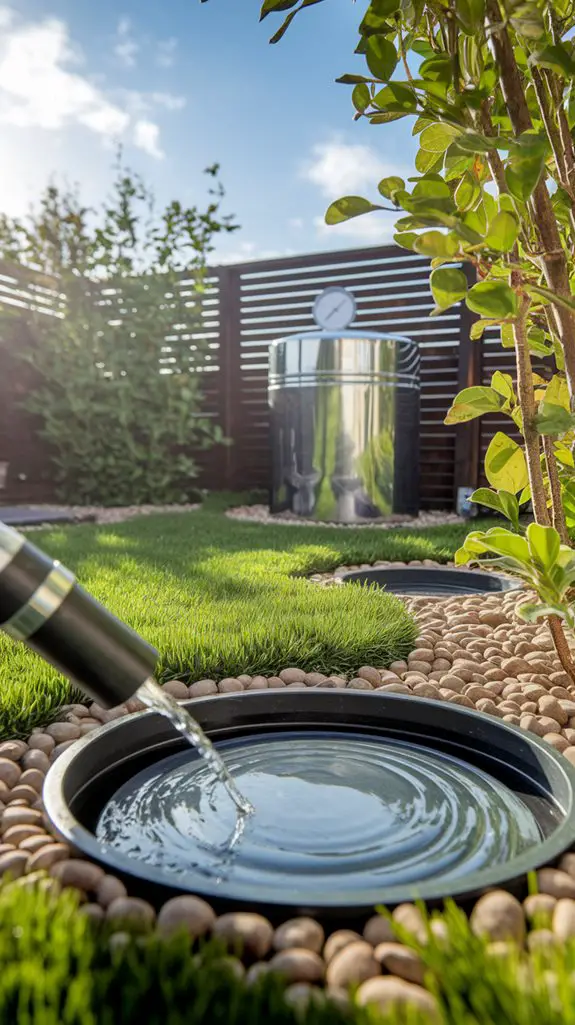
While barrel systems offer easy entry into rainwater collection, underground cisterns provide substantially greater capacity for homeowners seeking extensive water independence.
These systems typically store 1,500-10,000+ gallons, capturing rainfall from your entire roof surface.
- Cisterns require professional installation with excavation costs ranging from $2,000-$8,000
- Systems include pre-filtration components removing debris before water enters storage
- Submersible pumps (1/2-1HP) deliver consistent water pressure throughout your property
- Modern cisterns feature real-time monitoring, tracking water levels via smartphone apps
- Properly sized systems can reduce municipal water usage by 40-60% annually, depending on regional rainfall
You’ll need permits for installation, but the return on investment typically occurs within 3-7 years through reduced utility bills and landscape irrigation savings. Additionally, implementing a rainwater filtration system can enhance the quality of the harvested water, making it suitable for various domestic uses.
Decorative Rain Chains and Designer Collection Features
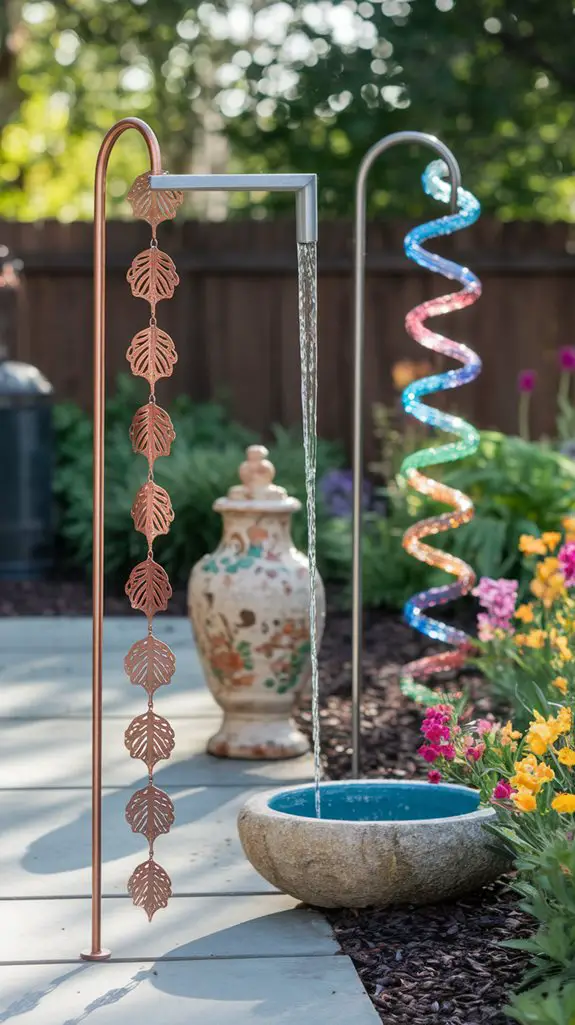
Aesthetics merge with functionality in rainwater harvesting through decorative rain chains and designer collection features. These elements transform utilitarian systems into landscape focal points while maintaining 95-100% collection efficiency. Copper rain chains, which develop distinctive patinas over time, conduct water at 30% slower rates than traditional downspouts, reducing erosion. Japanese-inspired designs feature cups or links that create mesmerizing water movements while amplifying rainfall sounds by approximately 15 decibels.
Designer collection barrels now include terracotta urns (50-75 gallon capacity), contemporary modular stackable systems (up to 200 gallons), and faux stone reservoirs with integrated planters. These options achieve 68% greater adoption rates among homeowners compared to standard barrels. Additionally, incorporating a rainwater irrigation system can significantly reduce water bills and promote sustainable gardening practices.
Most premium designs include UV protection, offering 10-15 years of service life—double that of conventional systems—while maintaining water quality for irrigation purposes.
Conclusion
You’ve explored three exceptional rainwater harvesting systems, yet you’re still watering your garden with treated municipal water. Ironic, isn’t it? By implementing a barrel system, you’ll save 1,300 gallons annually. Underground cisterns capture up to 5,000 gallons, while filtration systems reduce contaminants by 90%. Don’t let another raindrop go to waste—your garden and wallet will thank you.

